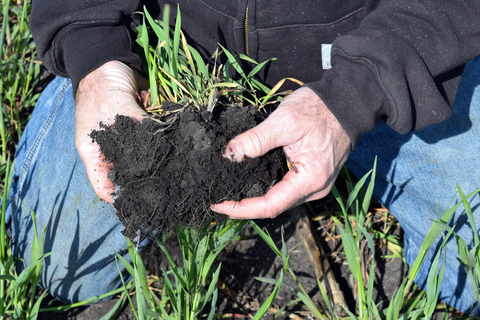Take care of your garden soil this fall
UNIVERSITY OF MINNESOTA EXTENSION - www.extension.umn.edu
As fall sets in, late September is an important time to take care of your garden soil so that it’s healthy and ready for planting next spring.
Take stock of your soil
One of the best ways to make sure you’re giving your soil what it needs each year is to take a soil test. Learn about the benefits of soil testing in the video below:
In addition to standard soil tests, there are some hands-on methods you can use to learn about the health of your soil. One of the most popular hands-on tests is a slake test.
- A slake test consists of suspending a clod of soil in water with some type of netting such as hardware cloth.
- Healthier soil with more stability is better able to hold on to water and resist erosion.
- If you’re using soil health practices like cover crops and reduced tillage, doing a slake test around the same time each year can show the progression of your soil’s stability over time.
Keep the soil covered for winter
Keeping the soil covered is an important soil health principle. You can do this in a few ways during the winter. One solution is to cover your soil with mulch. Another is to plant a cover crop. We have a new video about planting and maintaining cover crops in small spaces like backyard gardens. Check it out below!
The scoop on compost
Healthy soil with a cover crop
The end of the summer growing season is a common time when people add compost to their gardens. One of the easiest ways to add organic matter to our soil is to add compost, and improving our soil’s organic matter is an important tool for improving the resilience of our gardens. Soil with more organic matter can:
- Hold on to nutrients, keeping them available to plants and preventing them from leaching out.
- Absorb more water: this is important during heavy rainfall as well as drought.
- Withstand forces like wind and flooding that lead to erosion.
- Sustain more diverse and abundant microbial communities.
But, is it possible to add too much compost? This is a question we hear from time to time. Educator Anne Sawyer wrote a deep dive article about this topic earlier this spring. I highly encourage you to read the whole article, but in short, it is indeed possible to add too much compost. Many gardens in Minnesota have very high phosphorus levels, which is a problem for water quality. It’s important to take regular soil tests when you’re adding compost to avoid over-fertilizing.
Compost made purely of vegetable matter like fruit and vegetable scraps, leaf litter and sticks is less nutrient-dense than compost of animal origin like composted manure. Compost from purely vegetative material can be added to your garden every year - we typically recommend adding up to an inch or so of compost on top of your garden beds. This can be done in the fall or in the spring; if you add compost in the fall, adding a cover crop can help with nutrient retention.

